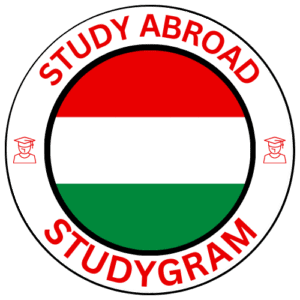
The study of locality—defined as the smallest social unit in which daily life unfolds—has become a cornerstone of contemporary ethnographic and anthropological inquiry. In Hungary, the Eötvös Loránd University (ELTE) has cultivated a robust research tradition that examines how villages, towns, and urban neighborhoods embody the fluid interplay between culture, power, and the everyday practices of their inhabitants.
Locality as a Lens for Ethnographic Insight
- Defining the Context. A locality is more than a geographic boundary; it is the setting where rituals, language, and social networks develop organically and reflect broader historical forces.
- Hungarian Historical Depth. From the pagan forests of the early medieval period to the modern suburbs of Budapest, each locality in Hungary preserves layers of cultural memory that can be traced through archival documents and oral testimony.
- Why It Matters. By concentrating on the minutiae of everyday interactions, scholars uncover the subtle mechanisms through which power and identity are negotiated, moving beyond sweeping generalized narratives.
This approach aligns with the mission of ELTE’s Faculty of Social Sciences, where research programs emphasize the relationship between local phenomena and national trends.
Methodological Approaches: From Macro to Point‑Like Deep Drilling
Macro‑Level Historical Contextualization
Historical anthropologists often start with a wide temporal and geographic scope—documents from the 18th to the early 20th century, for example—to map broad socioeconomic shifts such as the influence of the Austro‑Hungarian Empire or the transition to a socialist state.
Point‑Like Deep Drilling into Single Settlements
Unlike traditional macro studies, the point‑like approach selects a single locality that offers a rich archival record. Researchers then perform meticulous micro‑analysis of parish registers, land deeds, and legal case files. This method reveals patterns of everyday life that are invisible in broader datasets.
Archival and Manuscript Sources
In the Hungarian context, primary sources include:
- Parish registers and mission reports produced by the Catholic and Protestant clergy.
- Municipal council minutes that capture local deliberations and conflicts.
- Property and tax records that illustrate socioeconomic stratification.
- Personal correspondences and diaries offering intimate glimpses into daily concerns.
By translating and cross‑referencing these documents, scholars reconstruct the cultural logic that shaped an entire community’s worldview.
The Role of Local Intellectuals in Shaping Everyday Life
Priests, Teachers, and Clerks as Cultural Mediators
In many Hungarian villages, the parish priest or the school teacher did more than provide spiritual or educational guidance; they functioned as social arbiters, mediators of conflict, and conduits of both state and ecclesiastical directives.
Power Structures and Cultural Transmission
Analyzing how these roles evolved during periods of political change—such as the suppression of the Catholic Church under communist regimes or the post‑1990 liberalization—offers insight into how local identity was maintained or transformed.
For instance, the study of the exorcist in Zombor reveals how spiritual practices responded to external pressures from both church authority and local belief systems.
Challenges and Opportunities for Young Researchers
Negotiating Dense Networks of Influence
Local communities are often embedded in layers of relationships that make data collection and interpretation demanding. Patience, humility, and methodological flexibility are essential for extracting meaningful patterns.
Multi‑Level Ethnography
In the contemporary era, local culture cannot be examined in isolation. Researchers now integrate regional, national, and global perspectives to understand how external forces—like the digital economy—affect local life.
Graduate students at ELTE are encouraged to adopt this holistic stance, which ultimately enhances the relevance of their work.
Locality in the Context of Globalization and the Digital Sphere
Online Platforms as New Communicative Spaces
Social media, community forums, and local digital archives have become integral to how residents construct and share their identities. Ethnographers now study these platforms alongside traditional sources to capture contemporary cultural evolution.
Balancing Local Identity with Global Trends
ELTE’s recent projects assess how global cultural flows—such as tourism, migration, and the proliferation of online content—interact with local traditions, affecting everything from language use to economic practices.
Conclusion and Next Steps
By focusing on locality, Eötvös Loránd University provides scholars with a powerful framework for understanding the micro‑dynamics that shape cultural anthropology in Hungary. The university’s extensive archival resources, interdisciplinary faculty, and commitment to rigorous fieldwork make it an ideal environment for budding researchers.
Are you ready to deepen your expertise in locality research? Submit your application today to join ELTE’s graduate programs in ethnography and cultural anthropology.
For more information on research opportunities and faculty expertise, explore ELTE’s degree programs across all levels.
Interested in connecting with the community? Visit ELTE’s website and discover upcoming seminars, workshops, and research projects.
If you have questions or would like to discuss a potential research collaboration, contact the university directly.

